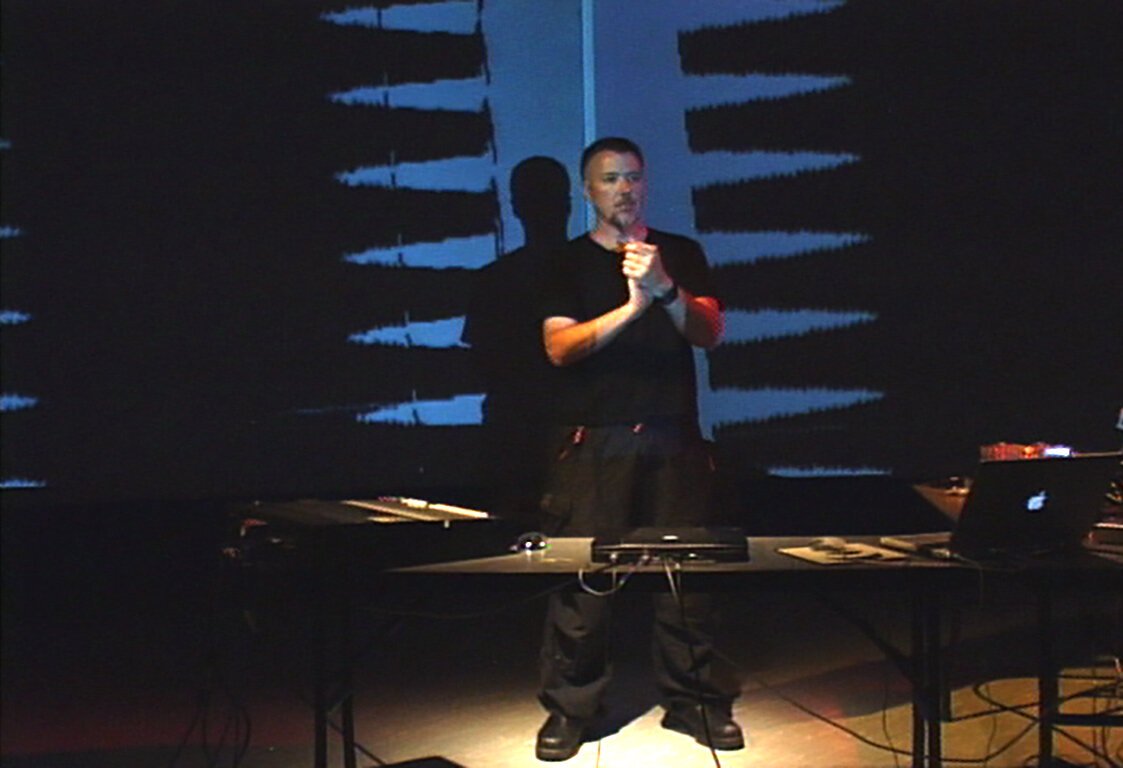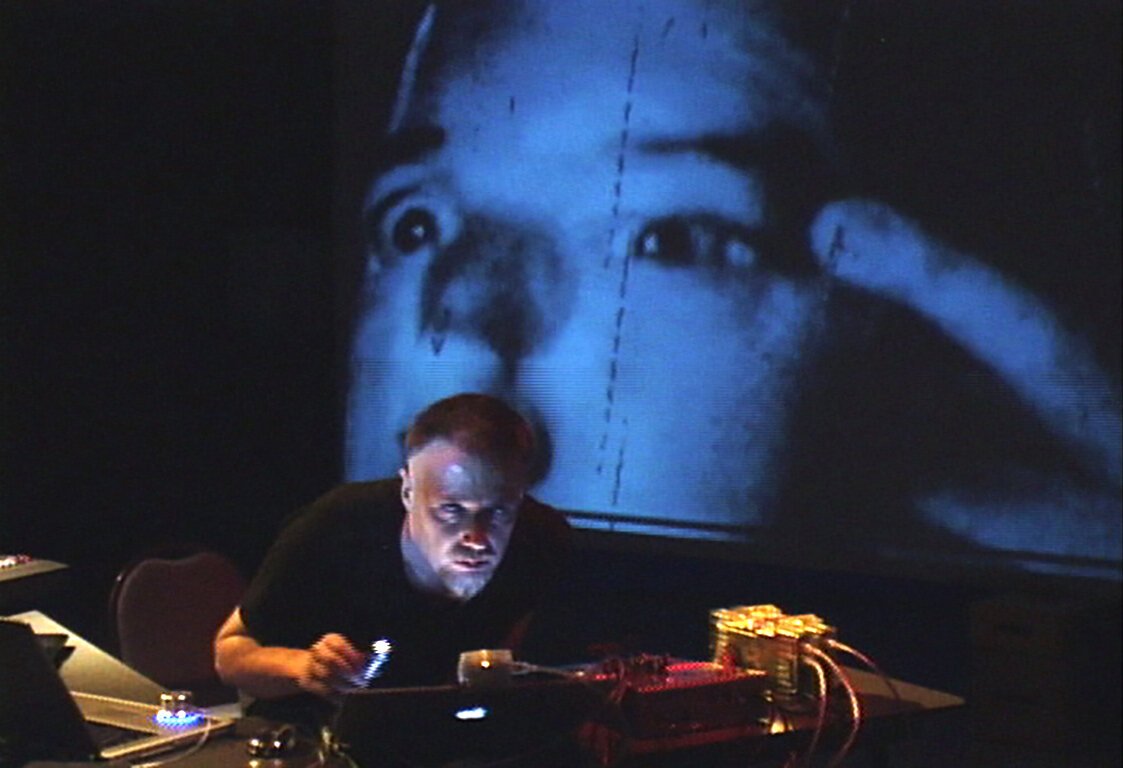SignalFire
2003–4
SignalFire, is a video-sound performance exploring realtime digital processing techniques to generate sound and image using greyscale video noise (television snow) as the primary material. A simple definition of video noise is “a grouping of black and white pixels randomly changing screen position every 25 to 30 times a second”. The performers subject this visual noisefield to a number of digital processes, producing a rich vocabulary of images that take advantage of recent software innovations to apply feedback (folding the signal or circuit back on itself) in subtle ways not possible with earlier analog instruments. A central component of this approach is that all sound or music is synthesized directly from the image; this sound and any sounds emitted from the performer in the immediate environment can be directed back into the system to effect various aspects of visual form, color, scale and movement. The result can be unpredictable as the visual and sonic elements effect the behavior of each other generating chaotic surprises for the performer and audience alike.
SignalFire is conceived as a series of modular movements each exploring different physical approaches to the laptop performance instrument. The modular form, is in essence, a strategy that allows the work to be continuously refined, recreated and recontextualized. These sections include:
(1) “OneoNOne”, is controlled by moving hands over the built-in laptop speakers & microphone while processing the visually synthesized sounds through a guitar foot pedal. The resulting audio feedback is played and sculpted in real-time as it regenerates new images, which in turn, generates new sound.
(2) “FaceOff”, utilizes a live video camera played with a flashlight to simultaneously perform electronic sound and choreograph the screen image as a real-time layered montage.
(3) “Cascade”, the processed video-noise signal flows between two linked laptops to create an evolving a series of rhythmic image-sound loops.
(4) “Poke” , this section relies on two performers using extended vocal techniques and simple acoustic gestures, such as tapping, rubbing and knocking on a wooden box to provoke and cajole images and sounds from the system.







